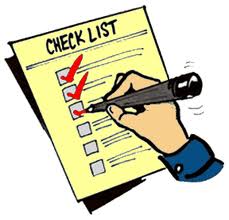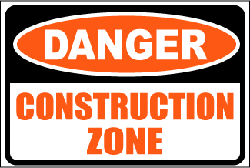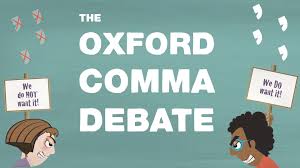;;;;;;;;;;;;;;;;;;;;;;;;;;;;;;;;;;;;
DON’T BE AFRAID TO USE A SEMI COLON!
Semi-colons are arguably the most misused punctuation in writing; they can be quite confusing.
Do you know why a semi-colon is used in the first sentence? It is separating two independent clauses, or complete sentences. A semi-colon creates a full stop in a sentence, unlike a comma, which is used as a pause.
When it comes to using semi colons in writing, most errors are made when the writer fails to understand the difference between an independent and dependent clause. The name of each clause offers clues to their uses. Once you understand clauses, semi colons are a snap.
Let’s review:
INDEPENDENT CLAUSES
Independent clauses, or main clauses, can stand alone as a sentence. They will always include a subject and a verb:
The window is open.
James plays the guitar.
The dog barked.
I went to the gym.
Even a short three-word sentence can be an independent clause if it contains a subject and verb, as the examples do above. Don’t be fooled by the length of a sentence, but consider, is it a complete thought?
DEPENDENT CLAUSES
Dependent clauses cannot stand alone as a sentence. They are dependent on other words to complete a sentence.
When James plays the guitar.
If the window is open.
Beginning with the files.
These examples are dependent clauses. They are not complete thoughts and need more information in the sentence for them to make sense.
When James plays the guitar, it reminds me of Jimi Hendrix.
If the window is open, flies will get in.
It’s time to organize the office, beginning with the files.
Now each of those dependent clauses makes sense, as we added independent clauses to complete the thought.
Below the dependent clause is italicized:
Because the window is open, the room feels cold.
I’d love to go to dinner, although I’m not dressed appropriately.
When you fix the tire, we’ll ride our bikes around the block.
USING SEMI-COLONS WITH INDEPENDENT CLAUSES
Semi-colons are used to separate two independent clauses when the ideas of the two clauses are closely related.
Don’t drink and drive; you could lose your license.
The dog escaped from his pen; I hope I find him soon.
Dinner was a great success; everything turned out perfect.
In the above examples, the second independent clause is closely related to the first part of the sentence, so keeping them “linked” with a semi colon makes sense.
You cannot separate two independent clauses with a comma, or you would create a comma splice, which is incorrect punctuation and will always be marked as an error. However, you could use a period, creating two sentences.
Wrong: Dinner was a great success, everything turned out perfect.
Correct: Dinner was a great success. Everything turned out perfect.
Correct: Don’t drink and drive. You could lose your license.
Correct: Don’t drink and drive because you could lose your license.
How to Determine When to Use a Period or Semi Colon
If both a period and a semi colon would be correct punctuation, how do you know which to use in different situations?
As stated earlier, the rule for a semi colon is you can use it if the second clause is closely related to the first clause. In many cases, using a period may sound okay, and not really affect the flow of the sentence. However, if you had several short sentences and you used periods to separate each one, the sentences become choppy and tedious to read. Read the paragraph below and see how it sounds with all periods:
Dinner was a great success. Everything turned out perfect. The steaks were tender. Mine almost melted in my mouth. I wish Mom could have come. She wasn’t feeling well. I hope it’s nothing serious.
Notice that it reads a bit like a galloping horse, plodding. This becomes quite boring to read after a while. Partly this is due to the repetitive subject-verb-object construction, but some of it could be alleviated with the use of a semi colon or two. See if you can tell a difference:
Dinner was a great success; everything turned out perfect. The steaks were tender. Mine almost melted in my mouth. I wish Mom could have come; she wasn’t feeling well. I hope it’s nothing serious.
Did you notice you took less of a pause when you got to the semi colons in the second example?
USING SEMI-COLONS FOR ITEMS IN A SERIES
Most often, commas are used to separate items in a series. Sometimes though, the items themselves contain commas, so using a semi-colon to separate the items makes the sentence clearer and easier to read.
I bought shiny, ripe apples; small, sweet, juicy grapes; and firm, Anjou pears.
I have been to Montana, Wyoming, and Oregon in the North; Texas, Arkansas, and Mississippi in the South; and New York, Connecticut, and Maine in the North East.
The newest additions to the cast are Josey Wales, who will play Will Davis; Deborah Farr, who will play his wife; and Tom Duffy, Farr’s young love interest.
Using semi-colons to separate the items above prevents confusion that might come from an abundance of commas.
FINAL THOUGHTS
Take care not to use a semi-colon too often. Any punctuation, if used too often, can become distracting. Sometimes it is simply a matter of judgement when and where to use semi colons. If you do incorporate them into your writing, use them sparingly and make sure you are using them correctly.
;;;;;;;;;;;;;;;;;;;;;;;;;;;;;;;;;;;;;;;;;;;;;;;;;;;;;;;;;;;;;;;;;;
EXERCISE
A semicolon belongs in each of the following sentences. Determine where the semicolon belongs. Then select the word that comes just before the semicolon.
- It is raining outside I will bring my umbrella with me.
raining
outside
umbrella
——————————————————————————–
- There is a lot of financial aid around you just have to know where to look for it.
lot
aid
around
_______________________________________________
- It’s such a beautiful day I will walk in Memorial Park.
beautiful
day
walk
——————————————————————————–
- We will play tennis tomorrow then we will go out for dinner.
play
tennis
tomorrow
——————————————————————————–
- She had very high grades in high school she applied to Harvard University.
grades
school
applied
[Some examples and exercises from The St. Martins’ Handbook and OWL Online Writing Lab.]










